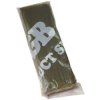I just bought a few Dahua IPC-HFW4631F-ZSA cams from AliExpress to replace my fathers current 10-15 yo system. Now these are going to be outside so I want them to be water proof, the camera's are IP 67 rated but I have a question about mounting it:

This is the mounting frame, I screwed it in the metal plate the old camera was attached to. Now the plate has a hole so the cables can go through it, but won't the water also get in there?

If I put the cable through it, there will be a lot of space left in the hole because the cable is way smaller than the hole. So rain will get in the hole and leak into the wall, how do I fix this?
TL;DR I'm stupid and can't seem to figure out how to properly put the cable from the bullet camera through the mounting frame. If you guys have tips (pictures would be lovely) I would appreciate a lot!

This is the mounting frame, I screwed it in the metal plate the old camera was attached to. Now the plate has a hole so the cables can go through it, but won't the water also get in there?

If I put the cable through it, there will be a lot of space left in the hole because the cable is way smaller than the hole. So rain will get in the hole and leak into the wall, how do I fix this?
TL;DR I'm stupid and can't seem to figure out how to properly put the cable from the bullet camera through the mounting frame. If you guys have tips (pictures would be lovely) I would appreciate a lot!
Last edited:








